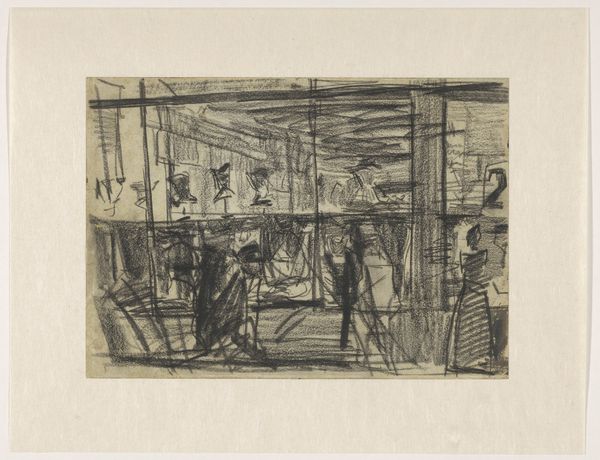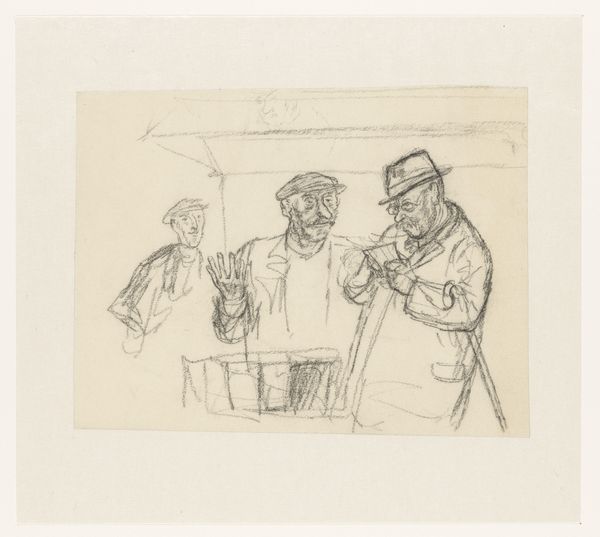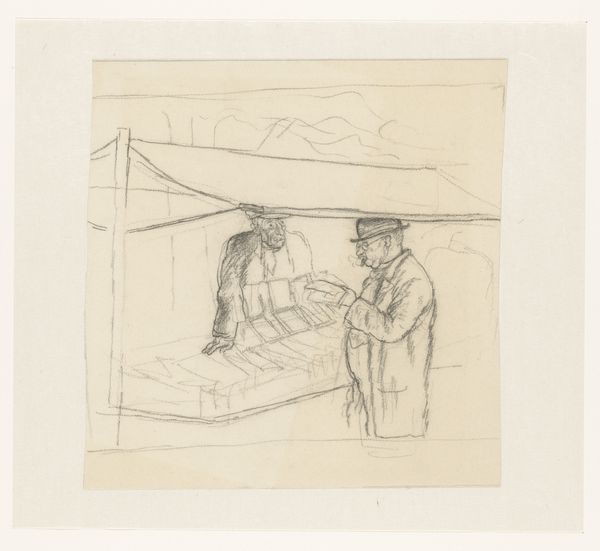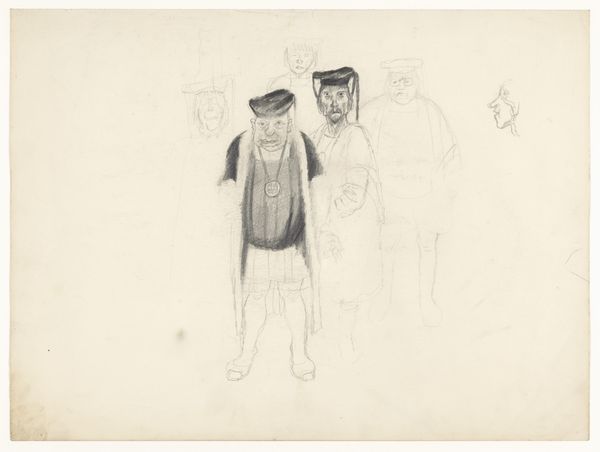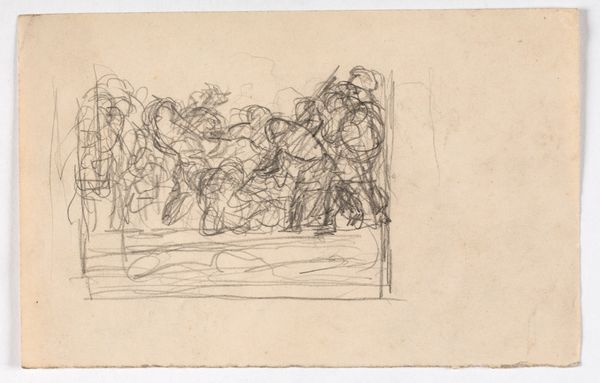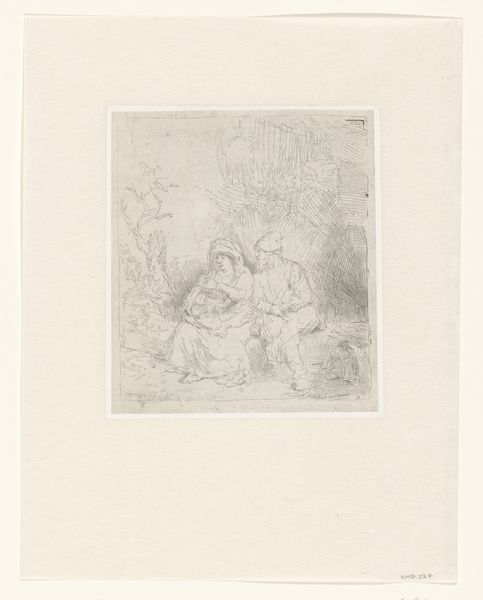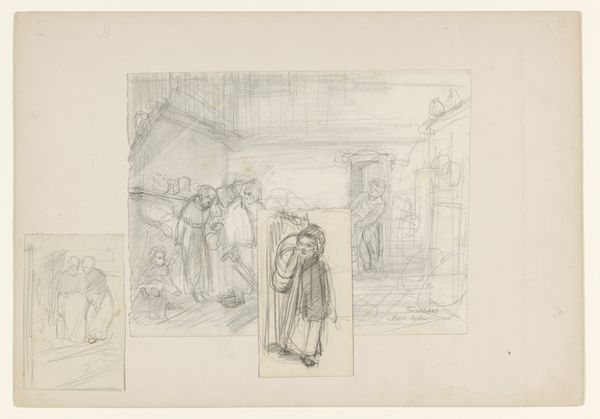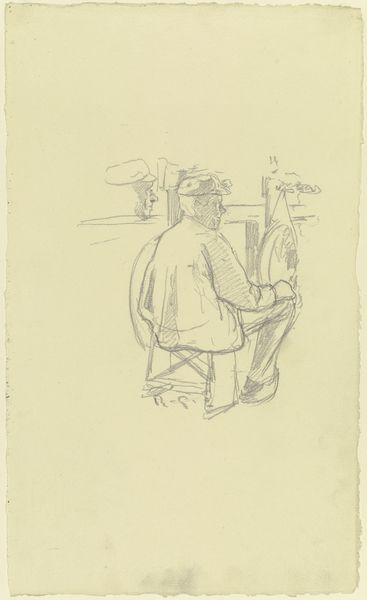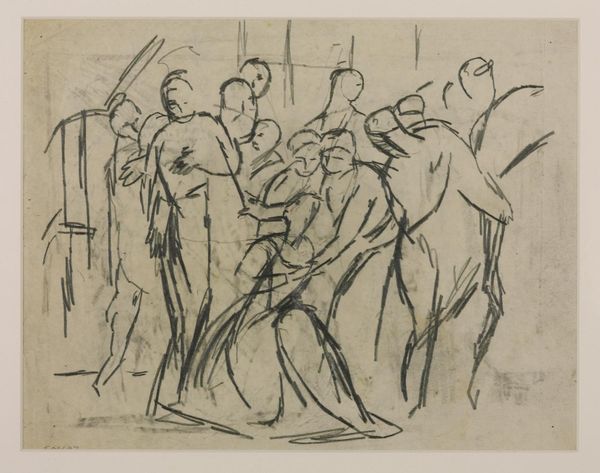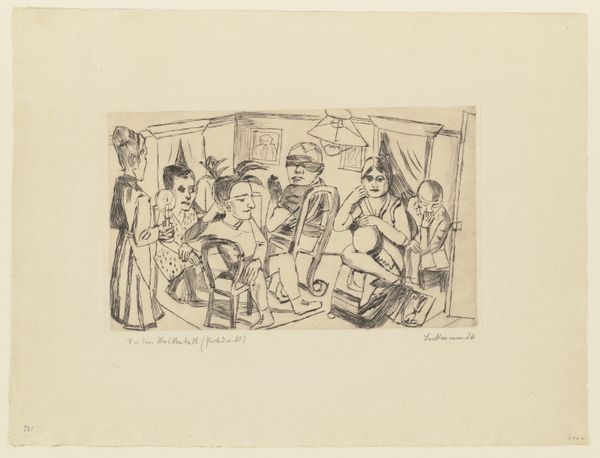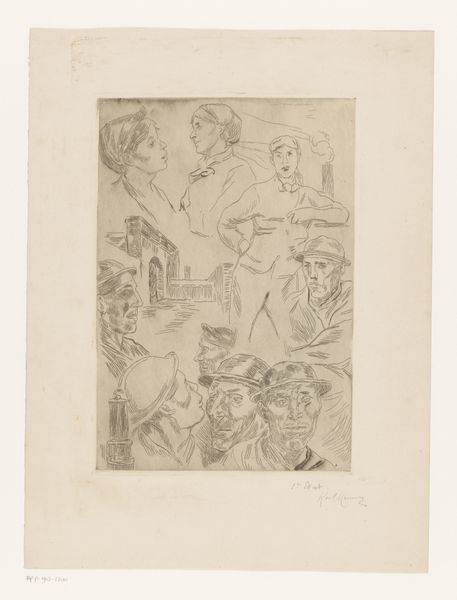
drawing, pencil
#
drawing
#
toned paper
#
light pencil work
#
book
#
pencil sketch
#
old engraving style
#
personal sketchbook
#
ink drawing experimentation
#
pencil
#
sketchbook drawing
#
cityscape
#
pencil work
#
genre-painting
#
storyboard and sketchbook work
#
sketchbook art
#
realism
Dimensions: height 260 mm, width 257 mm
Copyright: Rijks Museum: Open Domain
Curator: Looking at "Lezende man en boekverkoper bij een boekenstal", a pencil drawing by Henk Henriët, circa 1938, from the Rijksmuseum, I'm struck by its intimate glimpse into a past cityscape. Editor: My immediate reaction is that this feels like a memory, soft and a little hazy. The light pencil work contributes to that wistful, fleeting feeling. It almost whispers a story, doesn’t it? Curator: Absolutely, it brings to mind the tradition of depicting scenes of everyday life, very typical of genre-painting, focusing on individuals engaged in common activities, highlighting social classes and societal roles of the time. It raises questions about literacy, class, and access to information in that period. Editor: Indeed, the central figure, the man engrossed in reading, is powerfully symbolic. Books themselves are potent vessels of knowledge, dissent, and escapism, even subversion, and here, the artist captures a moment of quiet contemplation amidst the bustle of city life. Think about the potential impact that access to these books had on the society portrayed here. Curator: What also catches my eye is how Henriët uses the figures' attire to possibly indicate their class and profession, like those working at the bookstall are rendered more precisely than other customers, thereby telling stories not only of commercial exchange but about a socio-economic reality. Editor: I'm fascinated by the stall itself. Notice how the lines suggesting its structure seem to dissolve slightly, while the books have sharp lines. The very material, pencil on toned paper, creates an immediacy – as if we've stumbled upon Henriët sketching right there on the street corner, capturing this specific historical moment. Curator: Agreed, and considering the rise of different political movements during this period, one can imagine how subversive books may have acted to fuel critical thinking and resistance against the rise of totalitarian ideologies across Europe at the time. The artwork prompts consideration of such wider political climates that shaped the daily realities Henriët witnessed. Editor: It's interesting how an unassuming pencil sketch like this, of ordinary people in their routines, manages to offer such profound insights into historical cultural memory and socio-political narratives of the 1930s. Curator: I see now how close observation of visual symbols enhances not only our comprehension of individual lives at the time but enables insights into historical discourses that touched communities worldwide. Editor: For me, reflecting on this image is to recognize art’s incredible ability to let us both remember and to reimagine social pasts through fleeting encounters and lingering symbolic resonance.
Comments
No comments
Be the first to comment and join the conversation on the ultimate creative platform.
